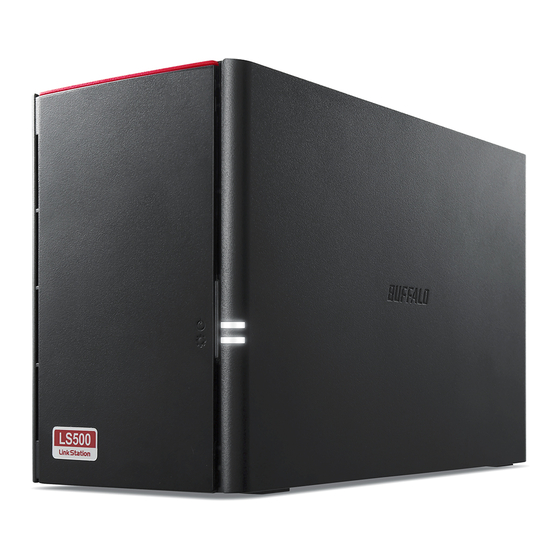
Buffalo LinkStation 500 User Manual
Hide thumbs
Also See for LinkStation 500:
- User manual (77 pages) ,
- User manual (128 pages) ,
- User manual (139 pages)
Table of Contents
Advertisement
Network Attached Storage
LinkStation 500
User Manual
Please make sure to read this manual before using and follow the procedures. If you have any inquiries about
the product, contact the number on the warranty statement or the packing box. Do not discard this manual, the
warranty statement, or the packing box.
Americas: www.buffaloamericas.com
Europe: www.buffalo-technology.com
Asia Pacific: www.buffalo-asia.com
35020844-12
April, 2018
Advertisement
Table of Contents















Need help?
Do you have a question about the LinkStation 500 and is the answer not in the manual?
Questions and answers